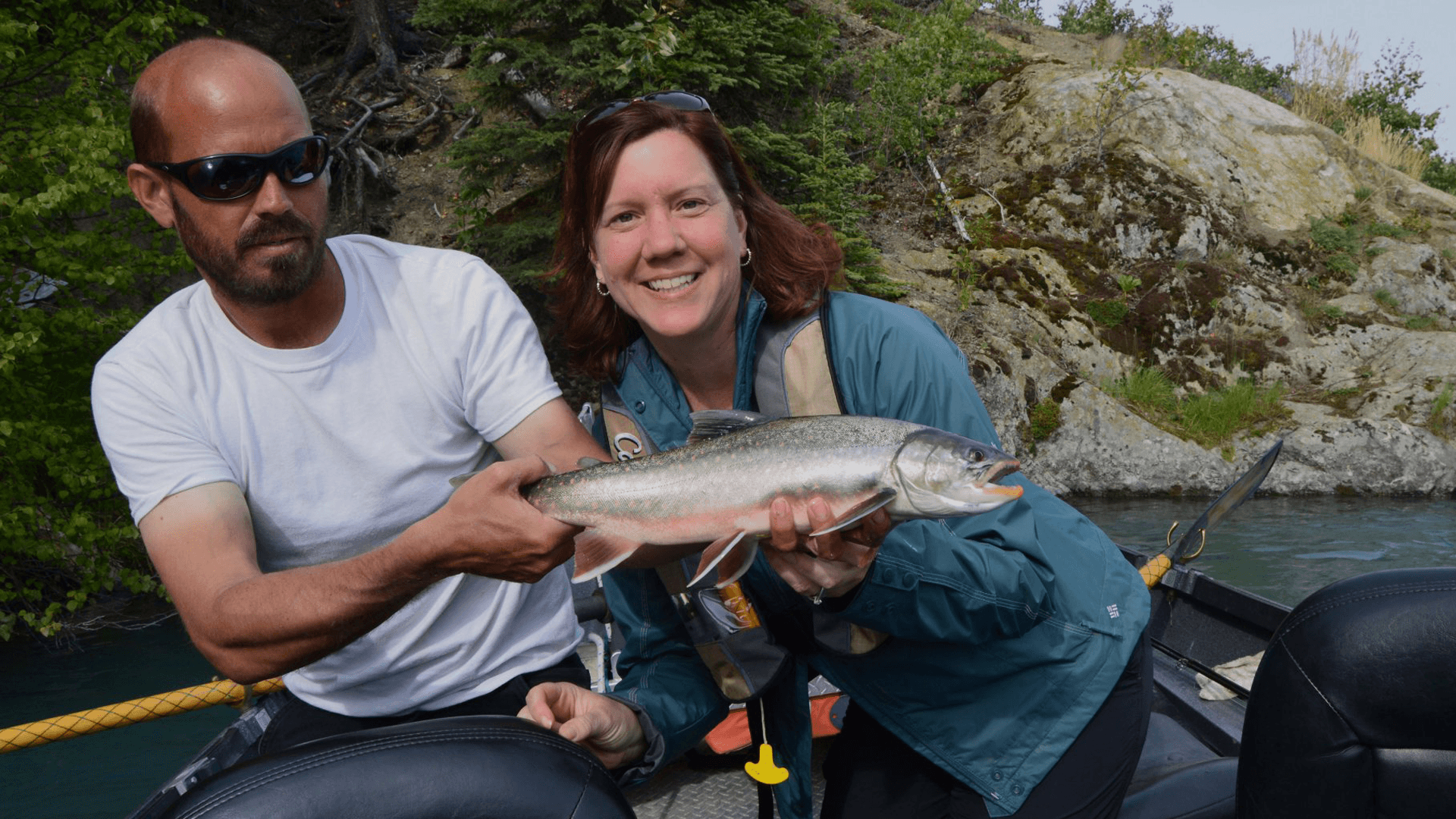Fishing the rivers and lakes on the Alaska Kenai Peninsula is a popular sport and a great way to enjoy the Alaskan outdoors. Anglers will find easy access to salmon runs on the Anchor, Kenai, Russian, and Kasilof Rivers, Deep Creek and the Homer Spit fishing hole.
Please carefully read the Alaska fish and game regulations that apply to the Kenai Peninsula and to the specific area you plan to fish. The regulations commonly include restrictions on the use of bait, type of hook and weight, legal species and size, days when fishing is allowed, bag limits, etc. Also be aware that the Alaska Department of Fish and Game may issue emergency closures that take affect with little notice. You will also find a lot of useful information including a link to Emergency Orders at Lower Cook Inlet Management Area – Fishing Information.
Wade Fishing on the Kenai Peninsula
Fishing on your own on the Kenai Peninsula rivers is generally wade fishing, requiring a good pair of chest waders. Be careful of the fast-moving currents and stay in shallow water, so that the current can’t take you off your feet.
Anchor River Fishing
The Anchor River, accessed at Anchor Point, is one of the Kenai Peninsula’s popular fishing rivers. You will reach this river in just minutes from your lodging at Bear Paw Adventure.
The Anchor, downstream of the Old Sterling Highway Bridge, is open weekends and Wednesdays for king salmon, starting the weekend before Memorial Day weekend, for a total of 5 weekends. (Note that this schedule is subject to change.)
The Anchor River is open for other species during those time periods and July 1 to October 31. Silver salmon fishing in the Anchor is usually excellent and starts with the run in late July and continues through mid-September. The best fishing is usually early morning.
Because red salmon (sockeye) spawn only in river systems that include a lake, the Anchor River does not have a red salmon run. Dolly Varden can be found in the Anchor River in early July through October. Check the Alaska fish and game regulations for restrictions related to these fisheries.
Steelhead fishing in the Anchor River begins in early August and peaks in mid- to late-September. This is catch-and-release fishing, and you are not permitted to take the fish out of the water and must handle the fish carefully.
Run Timing for Kenai, Soldotna, Anchor Point Areas - summary provided by Alaska Fish and Game Run Timing Publication.
Guided Bank Fishing
An excellent way to accelerate your learning curve and catch more fish when wade-fishing the Kenai Peninsula rivers is to engage a professional guide. This service is available at Anchor Point.


















